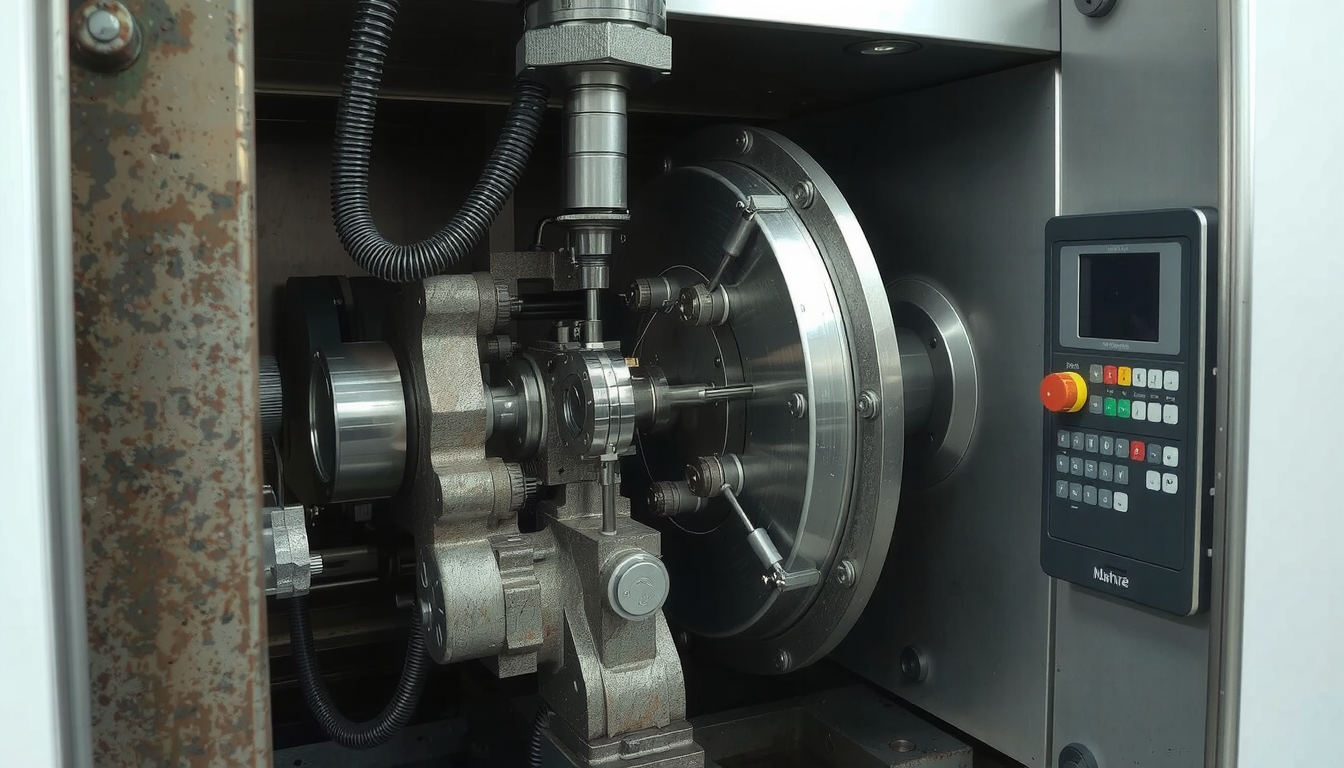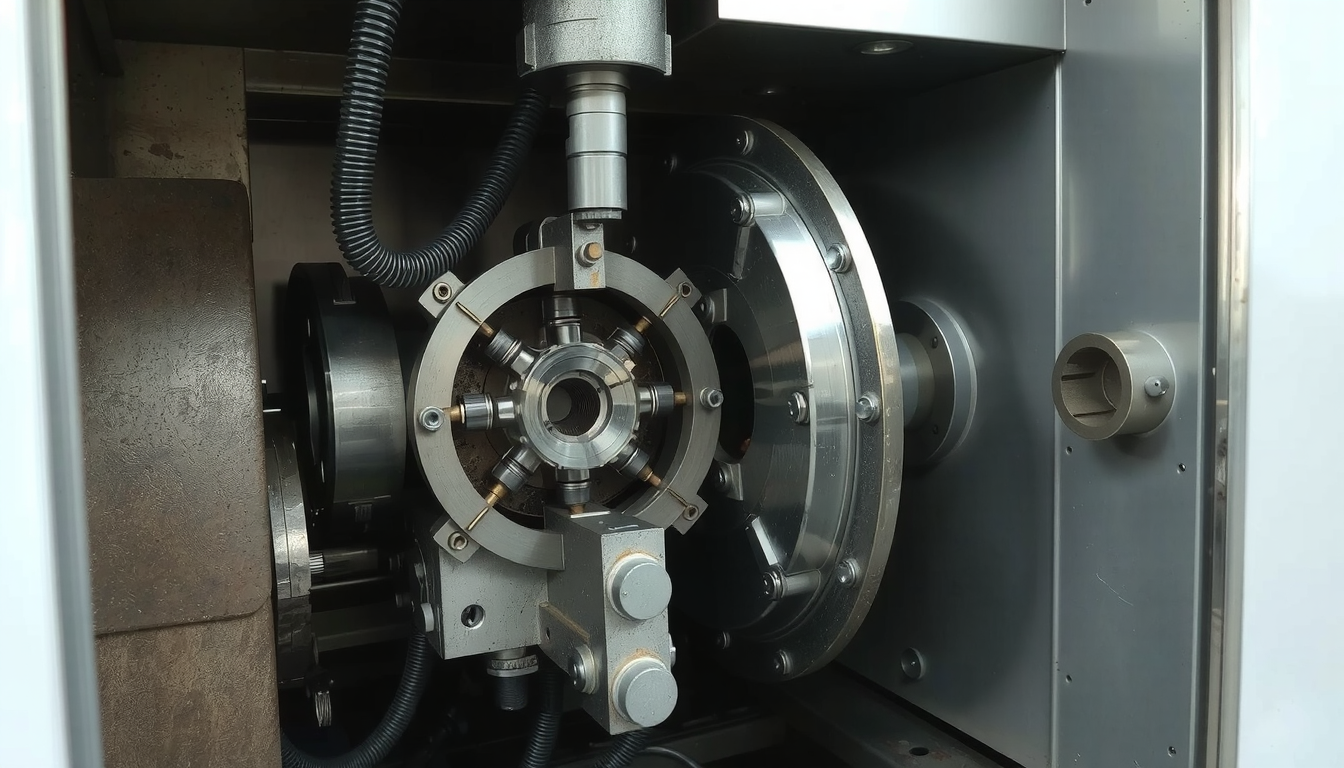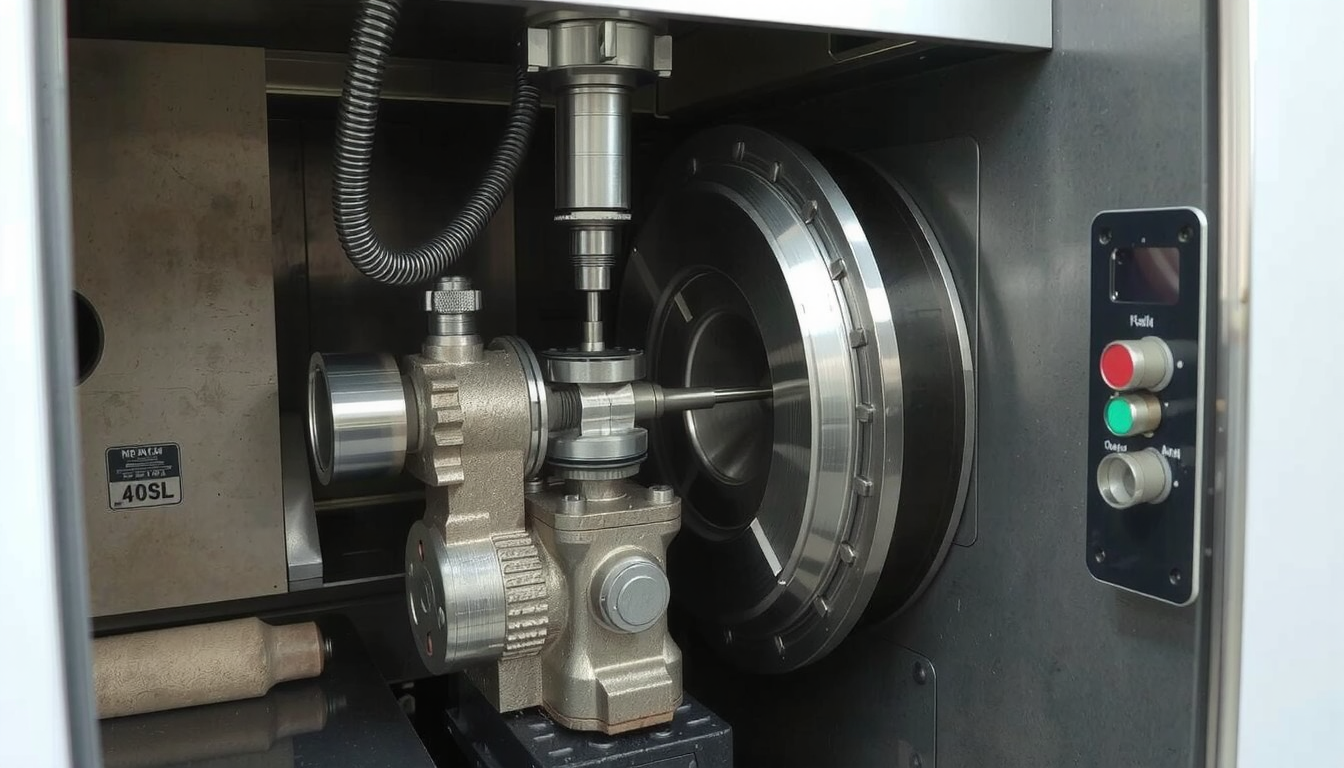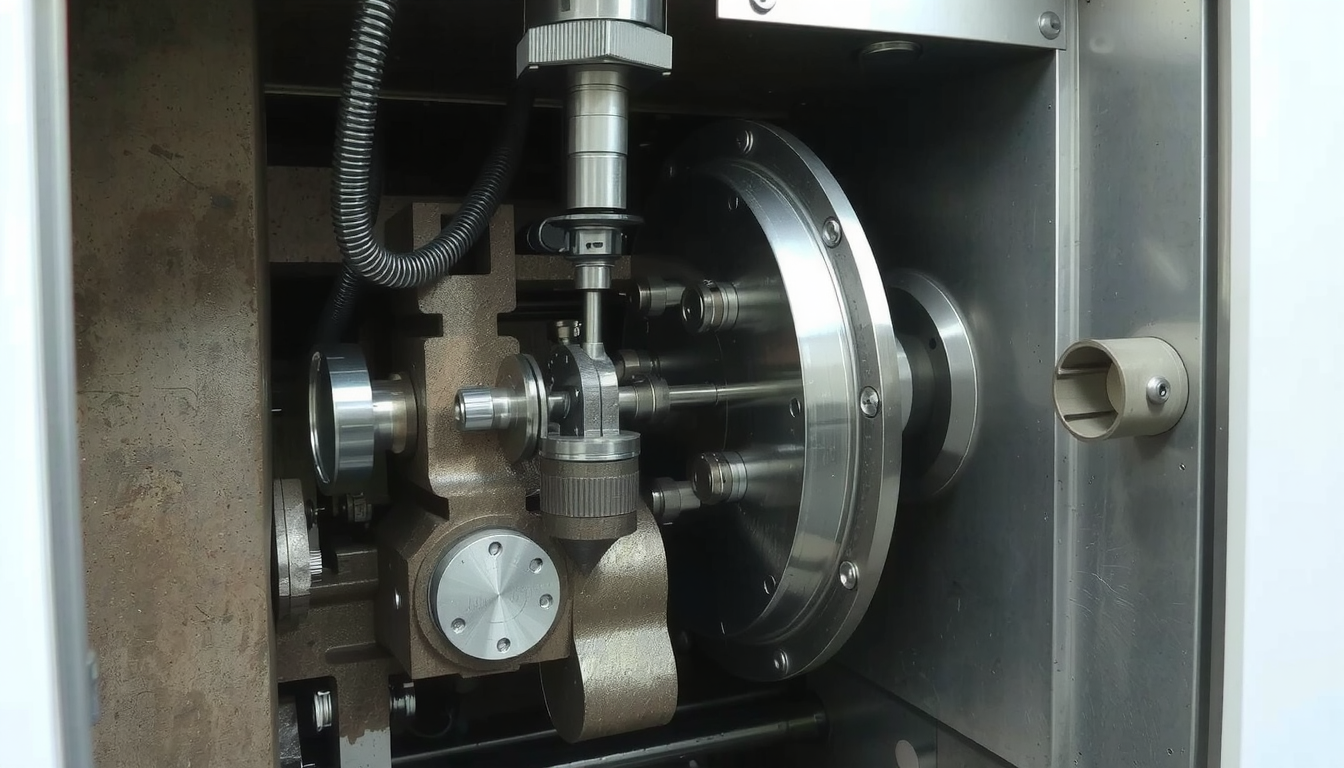A CNC lathe is a machine that rotates a piece of material very rapidly. While the material spins, a computer-controlled cutting tool moves in to cut and shape it. This method removes material to create a complex, finished part. It is an example of subtractive manufacturing.

The term “CNC” stands for Computer Numerical Control. This computerized function makes a contemporary lathe distinct from a manual one. With a manual lathe, a person rotates wheels and levers by hand. The computer, however, handles it with incredible accuracy and speed. This guide will walk you through all the steps involved. It describes how a CNC lathe works, from the digital drawing to the final part.
The Basic Principle
The main idea behind a CNC lathe is automated subtractive manufacturing. This means you start with a solid block or bar of material, often called a “blank” or “workpiece.” The machine then cuts away material, crafting it until only the desired shape is left.
The key feature that shows how a CNC lathe works is the spinning workpiece. The material rotates, and the cutting tool moves toward the material. This is the reverse of a CNC mill. In a mill, the tool rotates while the workpiece is stationary. This computer-driven process provides the precision that modern industry needs.
Parts of a Modern CNC Lathe
To fully grasp how a CNC lathe works, you must first know its essential parts. Every part carries out a specific function. They all work together as a team, coordinated by the computer to make a finished part. The machine’s solid structure ensures every movement is stable and accurate.
Here are the key parts and what they do:
| Component | Function | How It Contributes to the Process |
|---|---|---|
| Headstock | Houses the main spindle and the motor that drives it. | Provides the rotational power for the workpiece. |
| Spindle | The rotating shaft to which the workholding device is attached. | Spins the workpiece at programmed speeds (RPM). |
| Chuck/Collet | The workholding device that grips the material. | Securely clamps the workpiece to the spindle for safe rotation. |
| Tailstock | A movable support at the opposite end of the headstock. | Provides extra support for long or slender workpieces to prevent bending. |
| Bed | The foundation of the lathe that all other components are mounted on. | Ensures stability and precise alignment of all moving parts. |
| Carriage | Moves along the Z-axis (parallel to the spindle). | Carries the cross-slide and turret along the length of the workpiece. |
| Cross-Slide | Moves along the X-axis (perpendicular to the spindle). | Moves the cutting tools in and out to control the diameter of the part. |
| Turret | A rotating tool holder that can hold multiple cutting tools. | Automatically indexes to bring the required cutting tool into position. |

These are the main mechanical parts, but the real “magic” happens when the CNC controller directs them. For a deeper look at each part, resources like this guide on the 8 Parts of a CNC Lathe Machine from Xometry offer great detail.
The Digital-to-Physical Workflow
The “computer” part of CNC is what makes the process so powerful. Understanding this digital workflow is key to knowing how a CNC lathe works. It’s a four-step journey from a simple idea to a physical object.
- The Blueprint (CAD – Computer-Aided Design)
It all starts with a digital blueprint. This is a 2D or 3D model of the final part. Engineers and designers create this model using software like AutoCAD, SolidWorks, or Fusion 360. This CAD file contains the exact dimensions and shape of the part. - The Machining Strategy (CAM – Computer-Aided Manufacturing)
Next, the CAD model goes into CAM software. Here, a programmer creates the machining strategy. They decide which tools to use, plan the path the tools will take, and set how fast the material will spin and how quickly the tools will cut. This is where the ‘how’ of the cutting process gets planned out. - The Machine’s Language (G-Code)
The CAM software then translates this plan into a language the machine can understand. This language is called G-code. G-code is a simple text file with a list of instructions. Each line tells the machine exactly where to move, how fast to go, and which tool to use. For example, tells the machine “move in a straight line to position X=1.5 and Z=-2.0 at a feed rate of 100.” - The Execution (CNC Controller)
Finally, this G-code file goes onto the CNC lathe’s controller. The controller is the machine’s onboard computer. It reads the G-code line by line and sends electrical signals to the machine’s motors, telling them exactly how to move. This is how the digital plan becomes a series of precise, physical actions.
The Machining Process in Action
Let’s walk through a real example to see how a CNC lathe works from start to finish. Imagine we need to make a simple custom shoulder bolt from a round bar of aluminum.

Step 1: Setup and Workholding
First, the machinist loads a long bar of aluminum stock into the chuck. They make sure it is clamped tightly and securely. Then, they load the needed cutting tools into the turret. For this bolt, we might need a roughing tool, a finishing tool, and a parting tool.
Step 2: Facing Operation
The first cut is usually a “facing” cut. The turret rotates to bring the facing tool into position. The cross-slide moves the tool across the end of the spinning bar. This creates a clean, flat surface and sets a precise starting point for all other cuts.
Step 3: Rough Turning
Next, a roughing tool gets to work. Its job is to remove most of the material quickly. The carriage and cross-slide move the tool along the length and width of the part, cutting away aluminum to create the basic shape of the bolt’s shaft and head. This step focuses on speed, not a perfect finish.
Step 4: Finish Turning
With the basic shape formed, the turret brings a finishing tool into place. This tool takes a very light, precise final pass. It cuts the bolt to its final, exact dimensions and creates a smooth surface finish. The operation of a CNC lathe always involves this careful sequence of operations to achieve both speed and accuracy.
Step 5: Parting Off
Now that the bolt is fully formed, it needs to be separated from the main bar of stock. The parting tool is brought in. It cuts straight into the workpiece, creating a narrow groove until the finished bolt simply falls off, often into a parts catcher.
Step 6: Inspection
The cycle is complete, but the job isn’t done. The machinist takes the finished bolt and checks it carefully. Using tools like digital calipers, they measure it to make sure every dimension matches the original CAD drawing.
This example shows how a CNC lathe works for a simple part. For projects that need high precision and complex shapes, working with a professional service is often the best solution. You can learn more about professional CNC lathe services to see how experts handle these challenges.
Common CNC Lathe Operations
A CNC lathe is a very versatile machine that can perform many different types of cuts. Understanding these operations helps show the machine’s full potential. Here are some of the most common ones:

- Turning: Cutting along the outside diameter of a workpiece to make it smaller.
- Facing: Creating a flat, smooth surface on the end of a workpiece.
- Grooving/Parting: Cutting a narrow channel into a part or cutting the finished part off from the bar stock.
- Threading: Creating external or internal screw threads on a part.
- Drilling & Boring: Using a drill or boring bar to create or enlarge a hole along the part’s center axis.
- Knurling: Creating a textured, crisscross pattern on a surface, often for grip.
Precision, Repeatability, and Efficiency
The widespread use of CNC lathes comes down to three key advantages. These benefits explain why the technology is so critical to manufacturing.
Precision: Computer control allows CNC lathes to achieve extremely tight tolerances. A tolerance is the acceptable range of variation for a dimension. Tolerances of ±0.001 inches (0.025 mm) are common, and high-end machines can be even more precise.
Repeatability: Once a program is proven correct, the machine can run it over and over again, producing hundreds or thousands of parts that are practically identical with almost no variation between them.
Efficiency: Automation is key. The machine does the work, which reduces the need for constant operator attention. This lowers labor costs and dramatically shortens cycle times, making the process ideal for both one-off prototypes and large-scale production runs.
This combination of precision and efficiency is why CNC technology is a cornerstone of modern industry. It is relied upon by advanced manufacturing companies like Mekalite to deliver high-quality components.
Conclusion: The Symphony of Code and Steel
In summary, understanding how a CNC lathe works is about seeing the connection between a digital design, a precise programming language, and powerful mechanical parts. It is the process that perfectly turns a virtual idea into a real, high-precision object. Ultimately, the working principles of a CNC lathe machine have revolutionized manufacturing, enabling innovation across countless industries.
Frequently Asked Questions
What’s the main difference between a CNC lathe and a CNC mill?
A CNC lathe works by spinning the workpiece while a mostly stationary cutting tool shapes it, which is ideal for round parts. In contrast, a CNC mill works by spinning a cutting tool and moving it into a stationary workpiece. This is better for creating flat surfaces, pockets, and more complex shapes.
What materials can be used on a CNC lathe?
A wide variety of materials can be machined on a CNC lathe. This includes metals like aluminum, steel, brass, and titanium, as well as plastics like ABS, PEEK, and nylon. Even some woods can be turned. The material choice depends on the part’s final use, the available tooling, and the machine’s power.
Is it difficult to learn how to operate a CNC lathe?
Learning the basic operation of a CNC lathe can be done relatively quickly. However, becoming a skilled CNC machinist takes time and dedication. It requires a deep understanding of machining theory, G-code programming, material properties, and hands-on problem-solving. It is a skilled trade that blends technical knowledge with practical experience.
What does “2-axis” or “5-axis” mean for a CNC lathe?
The number of axes refers to the directions the cutting tool can move. A standard 2-axis lathe moves the tool on the X-axis (controlling diameter) and the Z-axis (controlling length). More advanced lathes can have a C-axis (letting the spindle position itself rotationally), a Y-axis (up and down movement), and even sub-spindles. These extra axes allow for much more complex milling and drilling operations on the same machine.
How much does a CNC lathe cost?
The cost of a CNC lathe varies greatly. Small benchtop or hobbyist models can cost a few thousand dollars. Industrial production machines, however, are a major investment, ranging from $50,000 to well over $500,000. The final price depends on size, brand, accuracy, number of axes, and special features.

